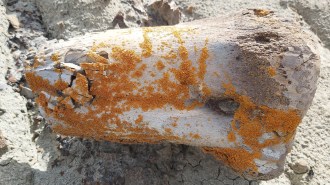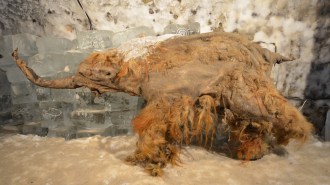Paleontology has a ‘parachute science’ problem. Here’s how it plays out in 3 nations
Legacies of colonialism can stifle science. But there are ways to rein it in

A fossil of the theropod Ubirajara jubatus (pictured) sparked a Twitter campaign in late 2020 with the hashtag #UbirajarabelongstoBR that called for the fossil’s return to its home country of Brazil.
R.S.H. Smyth et al/Cretaceous Research 2020
In the Cretaceous Period, roughly 100 million years ago, the dinosaur Ubirajara jubatus probably turned heads with its feathers, shoulder rods and flashy displays. In 2020, the petite theropod made headlines as the first feathered dinosaur discovered in the Southern Hemisphere (SN: 12/14/20).
Today, the dinosaur is notorious for different reasons: Shortly after the news of its discovery, its backstory quickly drew some red flags.
The fossil had been unearthed in Brazil’s Araripe Basin, yet no Brazilian researchers were involved in its study. The researchers initially said they found the fossil in a Brazilian museum and brought it to a German museum in 1995 for further study, yet that museum later revealed it bought the fossil in 2009 from a private company. That company imported the fossil to Germany in 2006, yet it’s not clear if that import was legal.
U. jubatus isn’t unique in this sense. A supposed four-legged, 120-million-year-old snake (Tetrapodophis amplectus), for example, also made an unsanctioned trip from Brazil to Germany (SN: 7/23/15). And then there’s a roughly 90-million-year-old shark (Aquilolamna milarcae) from Mexico with a fantastic wingspan, which may have been purchased by a private collector through a legal loophole (SN: 3/18/21).
These and many other cases of fossil fishiness are part of a long trend of what some call “parachute science” (or in this case “parachute paleontology”) and “scientific colonialism.”
These umbrella terms describe practices where scientists from high-income countries travel to middle- and low-income countries to study or collect fossils and fail to collaborate with or involve local experts. Or they skirt local laws around fossil collection and export. Sometimes the fossils are removed from their home countries under dubious or outright illegal circumstances. In other cases, the scientists purchase fossils from dealers, smugglers or private collectors in their own countries. The trend is linked to the legacy of colonialism, as many of the lower-income countries also happen to be former European colonies, while the higher-income ones are former colonizers.
“We’re talking about 21st century science here … so it shouldn’t be happening. It’s just too much,” says Juan Carlos Cisneros, a paleontologist at Universidade Federal do Piauí in Teresina, Brazil.
When researchers ignore local expertise, obtain fossils illegally or just buy specimens outright, it encourages corruption in communities near fossil beds, discourages early-career scientists from pursuing their profession and can result in unethical or poor-quality research. Illegally traded fossils not only violate the laws of their home countries, but they might also be separated from their geological context or modified by collectors.
To some degree, these practices were long seen as part of how paleontology and geology work, says Emma Dunne, a paleobiologist at Friedrich-Alexander-Universität Erlangen-Nürnberg in Germany. “I’ve heard it described as a conquest culture, where the Earth is there to be explored and exploited to further advance our understanding of the history of Earth,” she says. While other fields have raised their standards for field research, Dunne and others see paleontology as behind the times.
To understand the extent of parachute paleontology, Dunne and her colleagues compiled a database that tracked where the authors of more than 26,000 fossil publications were based. The team found that 97 percent of these papers came from researchers based in high- and upper-middle-income countries. The United States, Germany and the United Kingdom top the list of countries with the most publications on foreign fossils, the researchers reported in the February 2022 Nature Ecology & Evolution. Some countries’ fossil deposits were also being studied more than others, either because those countries had more funds to do their own research or because foreign researchers wanted to travel there, says coauthor Nussaïbah Raja, a paleobiologist also at Friedrich-Alexander-Universität Erlangen-Nürnberg.
Based on ratios of publications that include local authors and those that don’t, the team developed an index for countries most at risk for parachute paleontology. Those countries include places like the Dominican Republic, Myanmar and Namibia, the team reported in the same study. But the problem is widespread, they found.
“As soon as you give people cold, hard numbers, they suddenly just turn around and listen. And that was our whole aim,” Dunne says. Researchers used similar methods to dig into how those numbers play out in three countries: Brazil, Mexico and Myanmar. Each country acts as a case study showing a spectrum of the different ways parachute paleontology hurts communities where fossils are found.
Brazil
Brazil passed a law in 1942 that defines fossils as property of the federal government and another law in 1990 that regulates foreign research efforts within the country. The country allows exporting but requires a permit and a partnership with a Brazilian science institution. Commercial trading of fossils within the country is prohibited.
Yet an analysis of papers from 1990 to 2020 on Cretaceous vertebrate and plant fossils discovered in the Araripe Basin showed that over half of those 72 publications described fossils that ended up in a different country. And of the nearly 60 percent of papers on exported fossils, none mention export permits, Cisneros and colleagues reported in Royal Society Open Science in 2022. While one included details about fieldwork performed by the authors, details on collection permits were lacking.
Over half of all the publications described fossils that were probably bought, and many did not include local authors. Less than half of the publications were led by Brazilian researchers. Notably, those that were led by local scientists contained fewer issues, such as missing permit information or references to purchasing fossils.
The infamous T. amplectus exemplifies many of these trends. Originally described as a four-legged snake, the fossil was discovered in Brazil and subsequently made its way to Germany without the involvement of Brazilian researchers. The original research team claimed that the fossil was permanently housed in a museum, when in fact it belonged to a private collector, and the researchers could not produce evidence that the specimen had been exported legally. To top it off, a team that included a Brazilian scientist later disputed the claim that the ancient critter was even a snake.
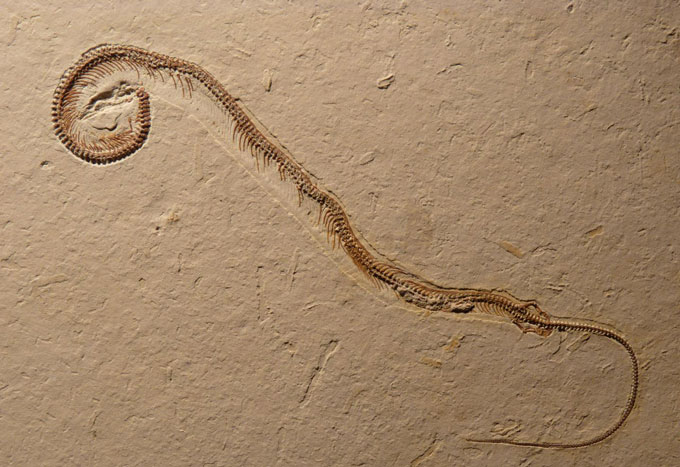
To date, the original paper has not been retracted and the fossil remains in Germany. After the specimen was reportedly damaged in a CT scan, the private collector temporarily revoked access to researchers, and now paleontologists can study the specimen only at the private museum where it’s currently on loan.
“Overall, these [issues] have an effect of making younger generations become less interested in science,” Cisneros says. “Students become frustrated, because they see that foreigners are basically doing their research.” In Brazil, fossils are considered part of the national heritage. When fossils are housed in other countries, he says, it becomes incredibly difficult for local researchers to study their own heritage.
Mexico
As in Brazil, fossils are considered property of the federal government in Mexico and cannot be exported permanently without permission or commercially traded. The country also has guidelines for foreign researchers that include working with local scientists.
And yet, many of the issues found with Brazilian fossils cropped up here as well, Cisneros, Dunne and colleagues reported in the same 2022 study.
The team focused on 126 publications from 1990 to 2021 on Jurassic and Cretaceous fossils of vertebrates, invertebrates and other species from sites in the Sabinas, La Popa and Parras basins. Nearly half of these studies were not led by Mexico-based researchers. And most were missing information on collection permits, whether they were headed by local or foreign scientists.
Unlike in Brazil, most of the fossil specimens in the study range stayed in Mexico. The country’s success in preventing fossil smuggling could simply come down to stricter enforcement, Cisneros says, and a long history of regulation in paleontology’s sister field, archaeology.
Interestingly, compared with Brazilian fossils, a slightly higher fraction of fossils from Mexico ended up in private collections, which present their own access challenges. “In private collections, you depend [on] the goodwill of some millionaire,” Cisneros says. When fossils are sold to private owners like millionaires or Hollywood celebrities, scientists lose access, and thus, the ability to study the specimens (SN: 12/2/22).
The long-finned fossil shark described in 2021 came under scrutiny when researchers initially claimed it was housed in a museum that hadn’t been built yet; it was actually in a collector’s stash. They later updated the paper to say that the shark would temporarily be housed in a different museum. The collector also told Science that the rock that contained the fossil had been purchased, not the fossil itself, and that the sale was thus legal.
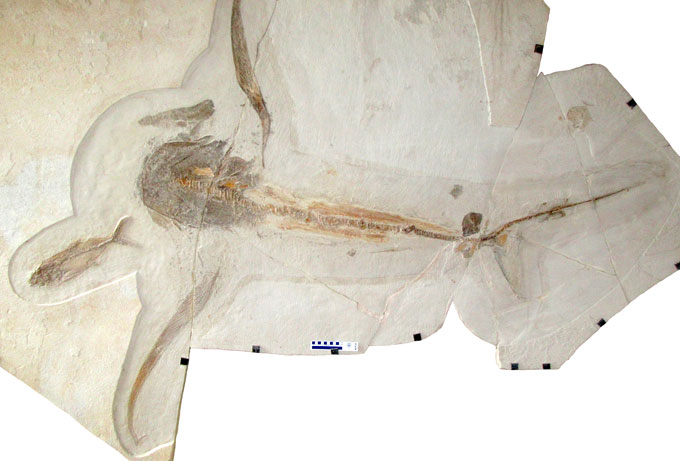
In an ideal world, these fossils would be studied and stored in museums near where they are discovered. “If they go to the to the local museums, they will improve the local economy, the social conditions of the community,” Cisneros says. But even within Mexico, that’s not the case. Many fossils are housed in museums in big cities far from the rock formations where they existed for millions of years.
Myanmar
Myanmar has always been renowned as a source of fossilized insects, plants and reptiles preserved in amber. But in recent years, the country has experienced an extreme case of colonialism in paleontology.
The volume of Myanmar amber publications over the past several decades experienced a huge spike beginning in 2014 that appears to correlate with political shifts in the country, Dunne and colleagues reported in September 2022 in Communications Biology. “It just suddenly explodes,” she says. “And that’s eye-catching. It gives you a sense that something else is fueling it, rather than just research interest.”
Amber exports exist in a legal gray area because amber is classified as a gemstone, which can be exported legally while fossils cannot. News reports suggest that scientists who study Myanmar amber might buy it across the border in Chinese markets, from dealers or from internet websites. And there are concerns about where the money from those sales ends up.
In 2010, the Myanmar military began taking over the country’s gemstone mines, where amber deposits are often discovered. By 2017, it had complete control. Over the decade or so since, publications on amber fossils started piling up, as have reports of the Myanmar military’s human rights violations and conflicts with ethnic militias. Then in 2021, military leaders staged a political coup and overthrew the government.
Both the military and ethnic militias have used these mining operations to fund their operations, and ethical questions about researchers acquiring Myanmar amber specimens began to mount even before the coup. While there’s no paper trail to connect the Myanmar military or militias to amber fossils described in journals, the study rings alarm bells that paleontologists who purchase fossils might be inadvertently helping fund a military coup and human rights violations. “Even if it’s the tiniest little impact that you’re making, why make it at all?” Dunne asks.
The authors on Myanmar amber studies published during that spike from 2014 to 2021 were predominantly based outside the country. Even over a broader period from 1990 to 2021, just five out of 872 publications on Myanmar amber included researchers from Myanmar. Over the same period, publications on fossils from Myanmar that were not preserved in amber did not see the same disparity.
Reversing these research trends could have positive ripple effects in Myanmar, two of the study’s coauthors, Myanmarese geologists Zin-Maung-Maung-Thein of the University of Mandalay and Khin Zaw of the University of Tasmania in Australia, wrote in a letter to Nature Ecology & Evolution in 2021. By working with scientists within Myanmar, “not only will scientific research standards improve within the country, but Myanmar’s people will gain a better understanding of the importance and scientific value of their own natural heritage rather than being robbed of it.”
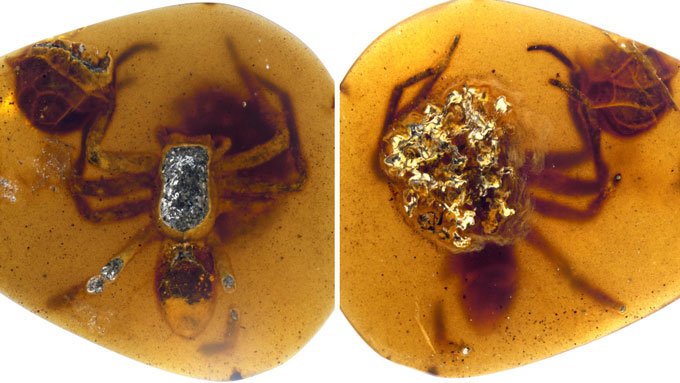
What’s next?
U. jubatus — the flamboyant theropod — might get a happy ending. The journal Cretaceous Research withdrew the discovery paper. And after an investigation and public outcry, Germany agreed in July 2022 to return the fossil to Brazil. The fossil finally returned home in June, and U. jubatus will ultimately become part of collections at the Museu de Paleontologia Plácido Cidade Nuvens near where it was first excavated in Ceará, Brazil. “It symbolizes a new phase in the way of doing science with respect for national laws and the rights of societies,” the museum’s director Allyson Pinheiro said in a statement.
The field itself hasn’t changed overnight and still has work to do to achieve lasting change. The pressure to publish papers that make splashy headlines, which drives some of this bad behavior, as Dunne notes, isn’t going away.
Many of the same names and foreign institutions keep cropping up in the analyses. In some cases, by purchasing a fossil or failing to get permission from local governments to excavate, those individuals appear to have broken local laws. “Some groups of researchers have always been notorious for conducting parachute science in the most unethical ways. And they just get a free pass by the community,” Dunne laments.
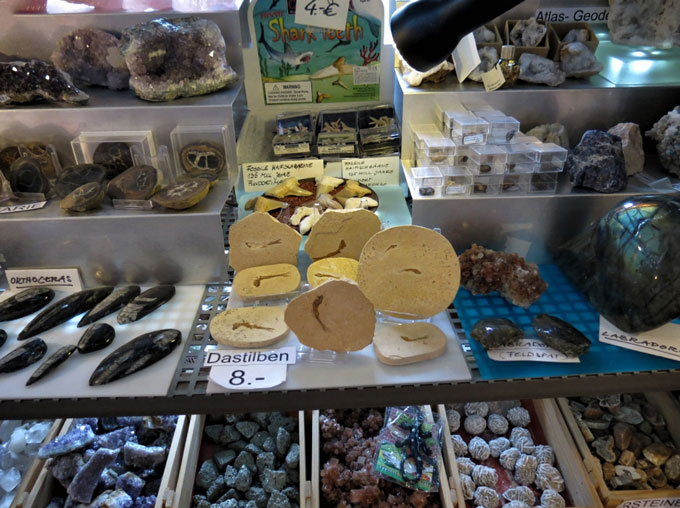
Combating the issue will require work on all fronts, Dunne and Cisneros agree: Journals must raise the bar on the information they require on a fossil’s origin and chain of custody; funders need to require that their grant recipients work with local experts and follow the laws of the country where the fieldwork is taking place; governments have to enforce those laws; and foreign researchers should collaborate with and credit their local counterparts.
In response to the recent data, social media campaigns and wider public awareness, some journals have changed their policies to require evidence of a fossil’s origins or necessary permits, but changes have been sporadic. Cretaceous Research previously declared it would not publish studies of fossils with unclear provenance, yet articles about Myanmar amber deposits still appear in that journal. The Society of Vertebrate Paleontology took a strong stance on Myanmar amber, initially issuing a moratorium on publications based on specimens collected after 2017 and later amending it to amber acquired after the coup in 2021, with guidelines for how to handle specimens collected before then. But vertebrates are only one slice of the fossil record, and many amber fossils preserve insects and plants.
Not everyone agrees with all-out moratoriums. Some paleontologists have argued that laws aimed at protecting fossils suppress science by limiting the number of fossils that are excavated and discourage amateur fossil collecting. “If you are in a country that bans fossil collecting and you find a really nice ichthyosaur jaw lying on the beach … are you going to leave it there for the tide to wash it away? The hell you are,” David Martill, a paleontologist at the University of Portsmouth in England and a coauthor on the U. jubatus paper, wrote in The Geological Curator in 2018.
Legal commercialization of fossils in some countries complicates the issue. Raja recalls recently walking into a main street shop in a German city and seeing Moroccan sharks and a Mongolian dinosaur egg for sale just a few doors down from big brands like H&M. While a dealer might have some documentation on the fossil’s legality, it’s hard to say for sure. “It’s really widespread in some countries,” Raja says. “I can go to a shop in Germany and just buy a fossil.”


